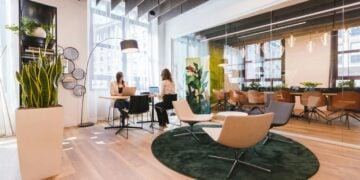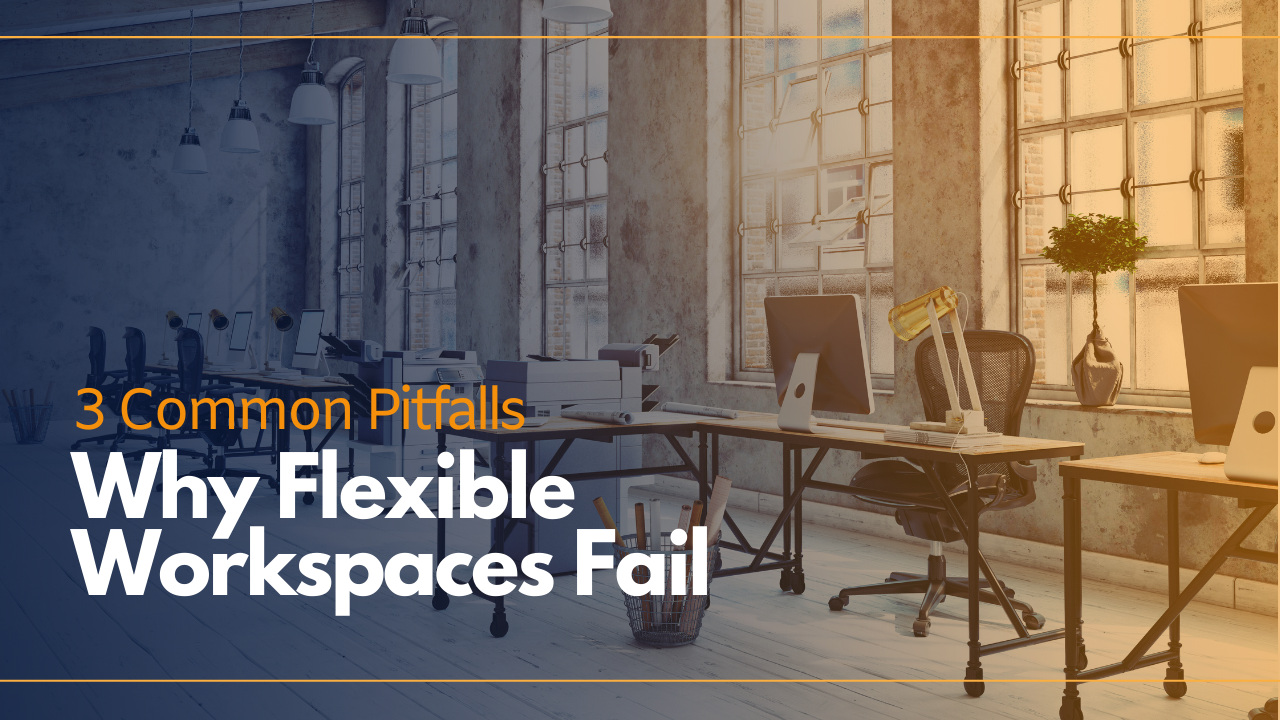- It’s clear that in the post COVID-19 world, workplace flexibility is key.
- As more organizations embrace flexible workspace solutions, competition is likely to intensify among flex space operators.
- To help operators differentiate and remain competitive, here are 3 things to avoid when starting or running a workspace.
Flexible workspaces have completely revolutionized the CRE industry. Prior to the coronavirus pandemic, some CRE leaders remained skeptical of the sector’s potential; however, one thing is clear now: in the post COVID-19 world, flexibility is key.
In fact, despite a slowdown in growth resulting from the pandemic, the flexible workspace sector is expected to bounce back within a couple of years.
As more organizations embrace flexible workspace solutions as part of their corporate real estate strategies, competition is likely to intensify among flex space operators. As operators prepare to welcome back members to the workplace and as they map out their growth plans for the future, they need to think about how they can ensure long-term success.
To this end, here are the top three common pitfalls that cause flexible workspaces to fail.
3 Common Pitfalls that Cause Flexible Workspaces to Fail
Thinking It’s Just about Space
Contrary to traditional CRE, flexible workspaces are about much more than square footage and rent. One of the main reasons why flexible workspaces have grown in popularity in recent years is because they’ve brought to life the idea of the workplace as a destination.
Why is this important?
Because as technology makes it easier for people to work from anywhere, the need to go to the office has decreased. Going into the office is now a choice — and this will hold truer in the post-pandemic world.
For flexible workspaces to succeed, they need to create an environment that people want to go to, day after day. This isn’t accomplished simply by offering desks and chairs; rather, flexible workspaces need to deliver an experience.
Which brings us to our second pitfall.
Neglecting the Hospitality Component
To create an experience, flexible workspace operators need to have a hospitality mindset, and they should market their spaces with this in mind.
This means that you can’t compete based on price alone.
While this may work for traditional CRE leases, it doesn’t work when it comes to flexible workspace offerings. Whether you’re hoping to attract entrepreneurs, startups, SMEs, or large companies if a potential client visits your space or makes an inquiry, it’s because they care about their people and the workplace experience that they have. They are going to be looking at much more than simply your price per desk.
To deliver an experience, flexible workspace operators can use several strategies:
- Focus on creating a sense of community
- Hosting a wide array of events
- Happy hours
- Lunch and learns
- Seminars and workshops
- Offer valuable perks and benefits
- Prioritize getting the basics right
- Enhance all touchpoints (e.g., ensuring the printer has enough ink, that there’s coffee ready, making it easy for people to book meeting rooms, etc.).
The long-term success of your flexible workspace will largely depend on whether you’re able to keep members happy and, therefore, ensuring that they keep coming back.
Underestimating the Role of Technology
It’s as simple as that.
Having the right technology in place can help make or break your workplace experience.
When choosing tech tools and platforms for your flexible workspace, it’s important that you think about the following:
- Functionality
- Ease of use
- Integrations
- Features
- Capabilities.
The platform you choose to run your flexible workspace should:
- Make it easy for members to make payments
- Make it easy for people to book meeting rooms
- Have a community building component (whether it’s an intranet or messaging board)
- Provide real time data and reporting
- Allow for CRM integration
- Have a strong security component
- Provide mobile access
- Include visitor management.
In short, your technology should not only help you run your flexible workspace, but it should also help you build and strengthen your community and workplace experience.


 Dr. Gleb Tsipursky – The Office Whisperer
Dr. Gleb Tsipursky – The Office Whisperer Nirit Cohen – WorkFutures
Nirit Cohen – WorkFutures Angela Howard – Culture Expert
Angela Howard – Culture Expert Drew Jones – Design & Innovation
Drew Jones – Design & Innovation Jonathan Price – CRE & Flex Expert
Jonathan Price – CRE & Flex Expert























